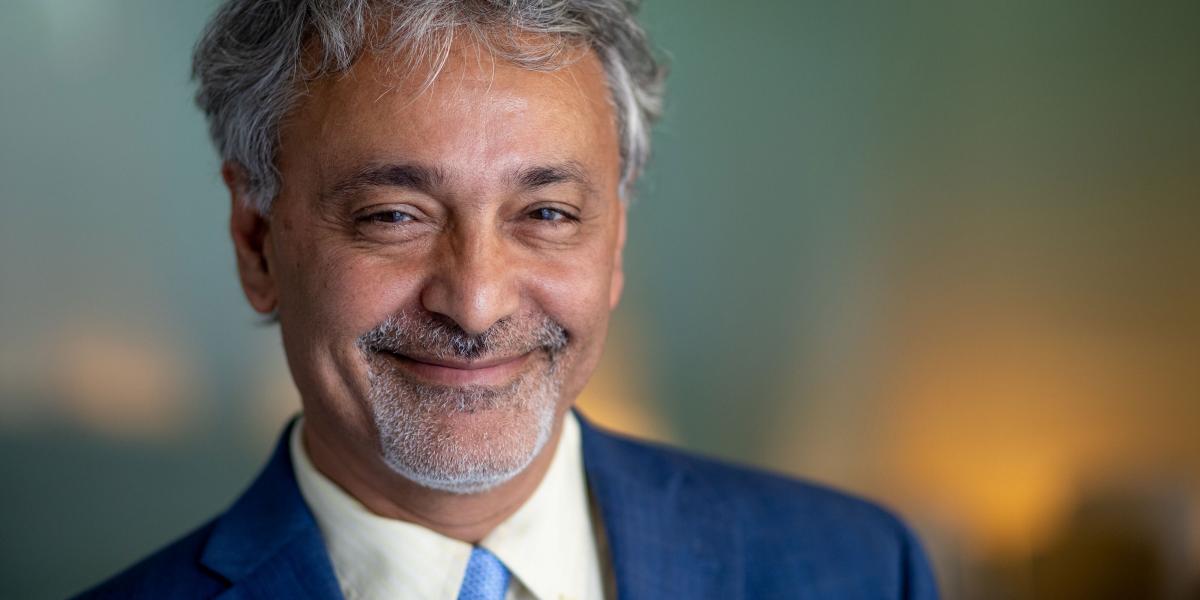Behaving Our Way to Health
From masking, hand washing, and distancing against Covid-19 to new global recognition, behavioral science is in the spotlight.
Rajiv Rimal has seen his field become ever more prominent in the public health mainstream over the past 25 years. When SARS-CoV-2 began its global rampage more than a year ago, the discipline took on a new urgency: Radically changing our behaviors was the only option that offered a chance to stem transmission.
“The role of behaviors in wellness and disease prevention is getting much more attention now because of coronavirus,” says Rimal, PhD, MA, named as Health, Behavior and Society chair in 2019.
He also cites WHO’s creation last year of its first behavioral technical advisory board—on which Rimal and HBS adjunct assistant professor Maria Carrasco, PhD ’16, MPH ’12, sit—as another milestone for the field.
In this Q&A, Rimal discusses the evolution of the field, effective behavior change communication, and his vision for HBS.
You’ve described the field of social and behavioral sciences as being in its adolescence. Why?
What I mean by adolescence is that it’s a fairly new orientation for the larger public health community.
Most of the noncommunicable diseases that afflict us today have roots in behavior—many cancers, heart disease, diabetes. By changing our behaviors, changing our lifestyles, there is a lot that we can do to avert the threat of many diseases.
On the communicable side, the same thing applies in that taking precautions against transmission also requires behavioral changes. With COVID-19, behaviors are front and center, not only in prevention. We’ve entered the next phase with vaccine uptake: It is not vaccines that save lives, but vaccination that saves lives.
What goes into a successful campaign to influence health behaviors?
We have to meet people where they live—not only in the neighborhoods where they live but also mentally and culturally. Interventions that would be effective in the West may not be effective—and, in fact, may be counterproductive—in a different part of the world.
We have to be sophisticated about understanding our target audience, what their daily lives and relationships look like. Do they have housing? Are they employed? There are so many factors that go into the decisions we make, and context is really important.
Can you give an example?
I’m doing a study in India looking at how to reduce anemia in women. The solution seems simple—take iron tablets—but it becomes messy very quickly, if you look at the context of women’s lives in rural India. Typically, women eat last during mealtimes, after everyone else has eaten, so there’s not much food and little nutrition in what’s left. They do not prioritize their own health over their family’s. We also learned that being weak and feeble—symptoms of low iron levels—is part of the female identity.
The intervention components include promoting iron/folic acid consumption as a behavior and working on the drivers of the behavior—social norms, self-efficacy, and beliefs about the benefits of iron—and educating families to value women’s health. Midline data [at six months] show that these variables have improved.
What did not change was [an increase in] hemoglobin concentration in the blood, the primary desired outcome. I think it’s partly that not enough time had elapsed to see a change, and we’re hoping that will show up at endline.
We have to meet people where they live—not only in the neighborhoods where they live but also mentally and culturally.
What are some campaigns that haven’t had great success in terms of health outcomes?
Alcohol consumption, particularly among U.S. undergraduates, is a huge problem and nobody seems to be able to come up with an effective way to address it. On one hand, at any sporting event, alcohol is heavily promoted. On the other, we’re telling youth, “You can’t drink until you’re 21.”
Then there’s the obesity epidemic in the U.S. and now worldwide. Anti-obesity messaging often uses images of obese people and sends a finger-wagging, “Don’t-be-like-this” message. There may be a whole host of issues impinging on people’s lives that have little to do with what these messages are telling them to do.
What is your vision for the department?
Today’s public health problems are so complex, and we need people with different orientations, approaches, theoretical perspectives, and areas of expertise, as well as people from multiple backgrounds and life experiences, working on the same problem.
We’ll be putting a lot of emphasis on social justice and the health implications of discrimination and living in a racist environment. Those issues are going to inform the direction we take as a department.
How will the social behavioral sciences field reach adulthood?
Our science has to be impeccable. I’m not saying it is not right now, but having a social behavioral science set of methods is important. Epidemiology, for example, has well-established methods judged by the scientific community to be rigorous.
An important advance for the field was the creation this year of a WHO technical advisory group with a behavioral focus. We’ve put out a document on vaccination, and we’re working on adolescent health. The goal is that WHO interventions go through a behavioral lens, that behavioral expertise has a seat at the table in these decisions.
